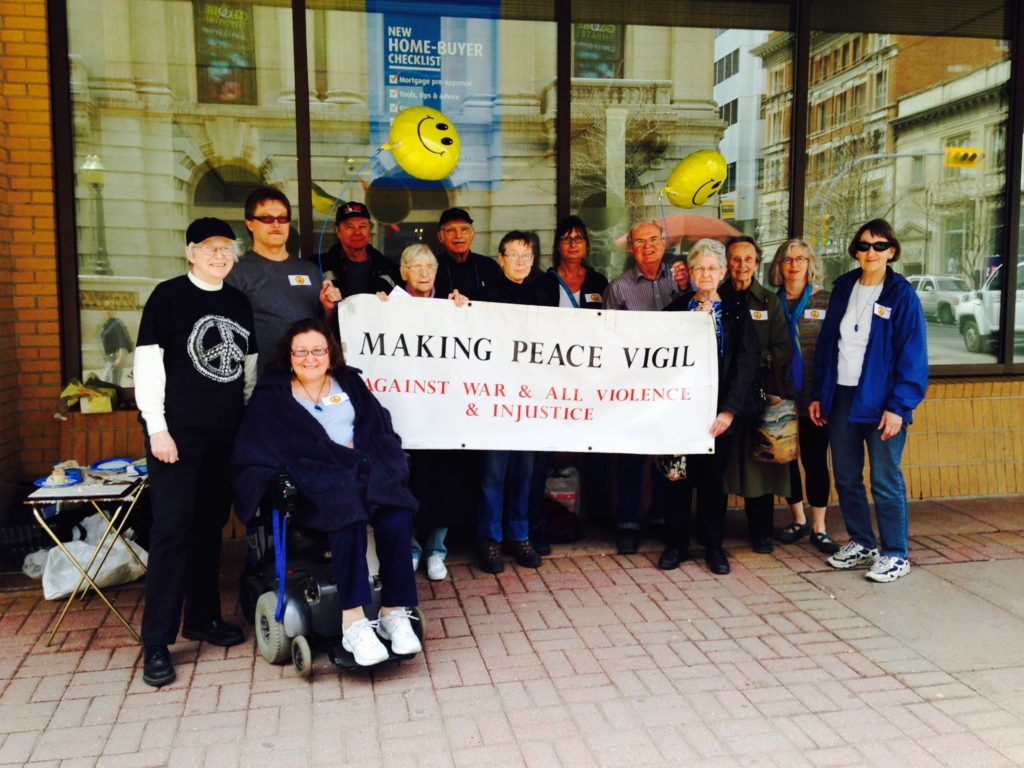HOMELESS IN SASKATCHEWAN
Currently, Saskatchewan is experiencing a homelessness crisis. Saskatoon’s 2015 point-in-time count found 450 people were homeless, a 19% increase over the previous count. In Regina, the YWCA is currently compiling a registry of homeless people. So far there are 240 names on the list.
These figures do not include the hidden homeless—people who are double-bunking or couch-surfing—numbers that could double or triple the homeless figures. The situation is so bad that, over the summer, tent cities sprang up in both Saskatoon and Regina.
As we hope to show, eliminating homelessness is a “transformational change” that will make Saskatchewan a happier, healthier, and more prosperous place for all. It is a way to move Saskatchewan forward.
THE RICH GET RICHER
The economic bust we are now experiencing is no excuse for not acting to eradicate homelessness. Saskatchewan is still a reasonably well-off place, even in bust times.
Moreover, Saskatchewan’s homelessness crisis began during boom times, when economic expansion and a growing population resulted in sharp increases in rents. In both Regina and Saskatoon, rents have almost doubled since 2006 and they are still going up.
In other words, our short-lived economic boom caused the homelessness crisis. We did not address it when we were flush with money. Instead, some of us got richer, while others of us lost a roof over our heads.
INEQUALITY IS BAD FOR EVERYONE
Numerous studies have shown that more equal societies are healthier and more cohesive—that societies where there is a large gap between rich and poor are bad for everyone, including the better-off. For example, in more unequal societies, the rates of mental illness and violent crime are not just higher amongst those at the bottom, but across the whole population. Health problems are also more generally common in societies where there is more inequality, and life expectancy is lower.
A large wealth gap also costs taxpayers billions of dollars annually. Homelessness is especially expensive, both in its direct costs (shelters) and its indirect costs (health services and policing).
There is, in addition, the Gandhian perspective on wealth inequality: “The true measure of any society can be found in how it treats its most vulnerable members.” At the time of writing (mid-December—it’s -20°C), there are still folks living in tents in Regina. This is unnecessary and unconscionable!
REDUCING INEQUALITY
How can we eliminate homelessness in Saskatchewan? Providing more emergency shelter beds is not the answer.
• Shelters are often not safe.
• Shelters do not allow for self-reliance or a sense of dignity.
• A shelter bed is not a home. A home is more than a place to sleep. It is a place where one can be any time one chooses and where one can keep one’s possessions—conditions not met by shelters, where, typically, folks have to be out of the building between 9 am and 6 pm, taking all their possessions with them.
• It is much less expensive to provide people with housing, than it is to keep them in a shelter.
Rather, we need to adopt policies that will narrow the gap between rich and poor people in Saskatchewan. For example:
1. Provide more affordable and adequate rental housing: The provincial government needs to work with both the federal government and provincial municipalities to provide more affordable and adequate rental housing, sometimes called social housing. The provincial stock of social housing has been both decreasing and deteriorating since the 1990s.
2. Provide funding for Housing First programs: Saskatoon and Regina already have Housing First programs. They are, however, funded (almost) solely by the federal government, with little or no provincial or municipal input. As a result, they are badly underfunded and lack the capacity to house more than a few dozen people in each city. Apartment availability is no problem at the moment, as vacancy rates are well above 3%, which is considered normal, with Regina at 5.5% and Saskatoon at 10.3%.
3. Increase the income of low income earners: Low income earners need more income so they can afford rising rents. The commonly accepted definition of “affordability” is housing that costs a household 30% or less of its income.
4. Raise the minimum wage, making it a living wage: On October 1 2016, the minimum wage in Saskatchewan was raised from $10.50 to $10.72 per hour. This measly 22 cent increase hasn’t done much to help low-income earner’s frail standard of living. The average monthly rent for a one-bedroom apartment in Regina is $926, hardly affordable for a full-time minimum wage worker earning $1,863 per month.
A living wage is the minimum income necessary for a worker to meet their basic needs, including housing, food, clothing, and transport. Regina’s living wage is $16.46 an hour, while Saskatoon’s is $16.77.
5. Make Income Service Benefits adequate: For example:
a) Raise the Saskatchewan Assistance Plan rate so it meets basic needs—i.e. is above the poverty line—and then index it to the cost of living.
b) Reverse the cuts to the SAID program for all recipients, then raise the SAID rate so it meets basic needs and index it to the cost of living.
THE ROBIN HOOD EFFECT
As for paying for this “transformational change,” that’s the easy part—even in these times of economic downturn.
1. Raise taxes on the wealthier classes.
2. Recover the tax dollars Cameco (and possibly other corporations, as well as individuals) have been avoiding/evading paying.
Such policies redistribute income so that economic inequality is reduced. The outcome is known as the Robin Hood effect.
In other words, the Government of Saskatchewan needs to be like Robin Hood (rather than Robin Hood in reverse). Instead of increasing inequality through its policies, it must work to reduce inequality and, by so doing, eliminate homelessness. Until this happens—until the wealth gap is considerably narrowed—Saskatchewan will continue to move backwards.

